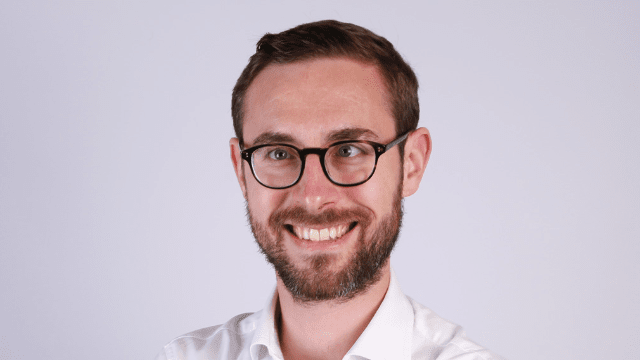Jérôme Calot (E06): "Your Money in the Bank Could Be Used to Fund Activities Which Harm the Environment"
The money you deposit in your current or savings account is often reinvested in activities which are harmful for the environment. How can we avoid our funds being used in this way? We find out from Jérôme Calot (E06), Director of Marketing and Communication with the neobank Helios.
ESSEC Alumni: How does the money deposited by individuals in their bank contribute to the environmental crisis?
Jérôme Calot: Monetary creation and financing by banks is based on a balance with the collection of liquid assets from customers. In this way, the money deposited in people’s current or savings accounts may contribute to the most harmful projects for the environment, such as the production of fossil fuels, polluting industries or intensive agriculture. According to the NGO Reclaim France, the major French banks thus granted more than $11 billion to the 9 leading American and European oil and gas companies in 2022, which brings total fossil fuel funding to $1,331 billion since the signing of the Paris Agreement in 2015.
EA: And yet there has been a tightening in banking sector regulations in this area in recent years...
J. Calot: There is no limiting regulation; each institution is free to choose its funding and investment areas, and establish its own level of profitability and risk. It’s true that since 2017, banks have been bound to the Directive on the Duty of Care which obliges them to prevent and rectify breaches to human rights and environmental damage caused by their activities. BNP Paribas was called to justice on these grounds in early 2023. However, the latest legal rulings in the matter reveal how difficult it is to apply the textbook law.
EA: Could this change in a near future?
J. Calot: The recent enactment of a dedicated measure by the European Union could be a game changer. For the moment, however, the latest development concerns the regulation on non-financial reporting, which requires companies to provide information on their social, environmental and societal impacts. This non-financial activity report will become increasingly commonplace, which should lead to reliable data and a way for companies to compare each other. Banks will thus have to take stock of their limits and contradictions, in addition to the expectations of stakeholders looking to see more involvement on the part of banks in environmental transition.
EA: Would it be a caricature to say that, at this stage, traditional banks have ‘irresponsible’ investment policies? Aren’t there any taking steps or at least offering alternatives to their customers?
J. Calot: The figures clearly show that responsible investments or funding still represent a mere drop in the ocean of traditional banking activities. Can we consider, for example, that it is responsible to continue supporting the development of major petrol company whose renewable offer is supposed to represent less than 10% of its activity by 2030? Or back a company whose strategy clearly adds to a rise in temperature well beyond international climate engagements?
EA: Are there solutions for individuals who do not want their savings to fuel negative-impact activities?
J. Calot: There are ethical institutions who make strong investment choices and are transparent on their funding. This is the case of Helios, among others.
EA: How can we be sure a bank is not talking out of both sides of its mouth?
J. Calot: If you go by the bank’s declarations, you have no real guarantee. The best solution is to refer to the conclusions of independent observers who monitor banks’ activities, their upholding of engagements and the earmarking of their funding. At Helios, for example, we had the carbon impact of our investments surveyed by an outside body, which confirmed that our accounts were among the lowest CO2-emitting in France in 2022.
EA: How can banks control the impact of their investment products?
J. Calot: Banks are responsible for the end purpose of the funds they allocate. They must limit non-marked uses of funds and complex set-ups which prevent information from flowing correctly. They must also carry out their own impact assessments with official methods and classifications, and publish the results so that external players can assess them in turn.
EA: So-called responsible finance has also attracted controversy, for example with the recent reclassification of numerous Article 9 funds. What is your view on these shortcomings?
J. Calot: In my view, this is not a question of shortcomings, but of greenwashing. The real problem is that the funds in question may have used attractive terms to misinform on the true sustainability of their financial tools. Fortunately, regulators are watchful and no longer hesitate to warn or punish. Certifications are changing and progress is being made in transparency and stakeholders’ level of vigilance.
EA: Is there any recourse for individuals who believe they have been duped?
J. Calot: It seems that only class action can change the game and create stricter jurisdictions for businesses. The likelihood of recovering your losses remains low, given the efforts required to prove a potential failing on the part of financial players who are well protected by the legal firewalls of their Risks & Compliance departments. Prevention is better than cure, by asking the right questions before and referring to the most demanding certifications.
EA: What about profitability? The recent bankruptcies in the USA are a reminder that the health of a banking institution largely depends on its investment performance, and banks that are ‘too big to fail’ are particularly vulnerable. How do neobanks measure up to traditional players in this regard?
J. Calot: It is difficult to compare them because there are so many differences between a traditional banking institution and a neobank, in terms of risk exposure, the amount of assets managed, or the geographical footprint of investments, etc. Furthermore, neobanks very rarely have a full banking licence; their funds are thus reserved in banking institutions who carry a large share of the risk. The main threat to these new players is their capacity for self-funding (capital risk or debt) while they wait to become profitable, in a context where funding is rarer and more selective.
Interview by Louis Armengaud Wurmser (E10), Content Manager at ESSEC Alumni
Do you want more quality content about the ESSEC community? Join us now!

Comments0
Please log in to see or add a comment
Suggested Articles



